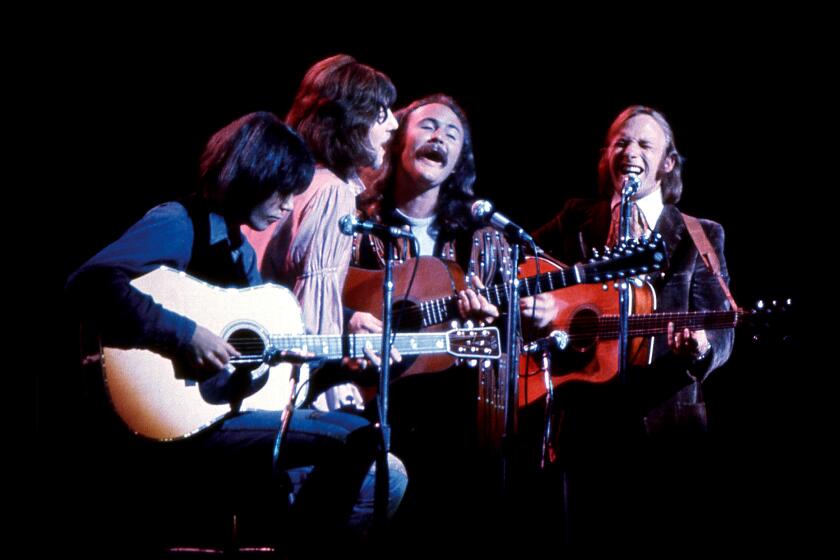Fall planting at the mini farm of James and Suzy Amis Cameron
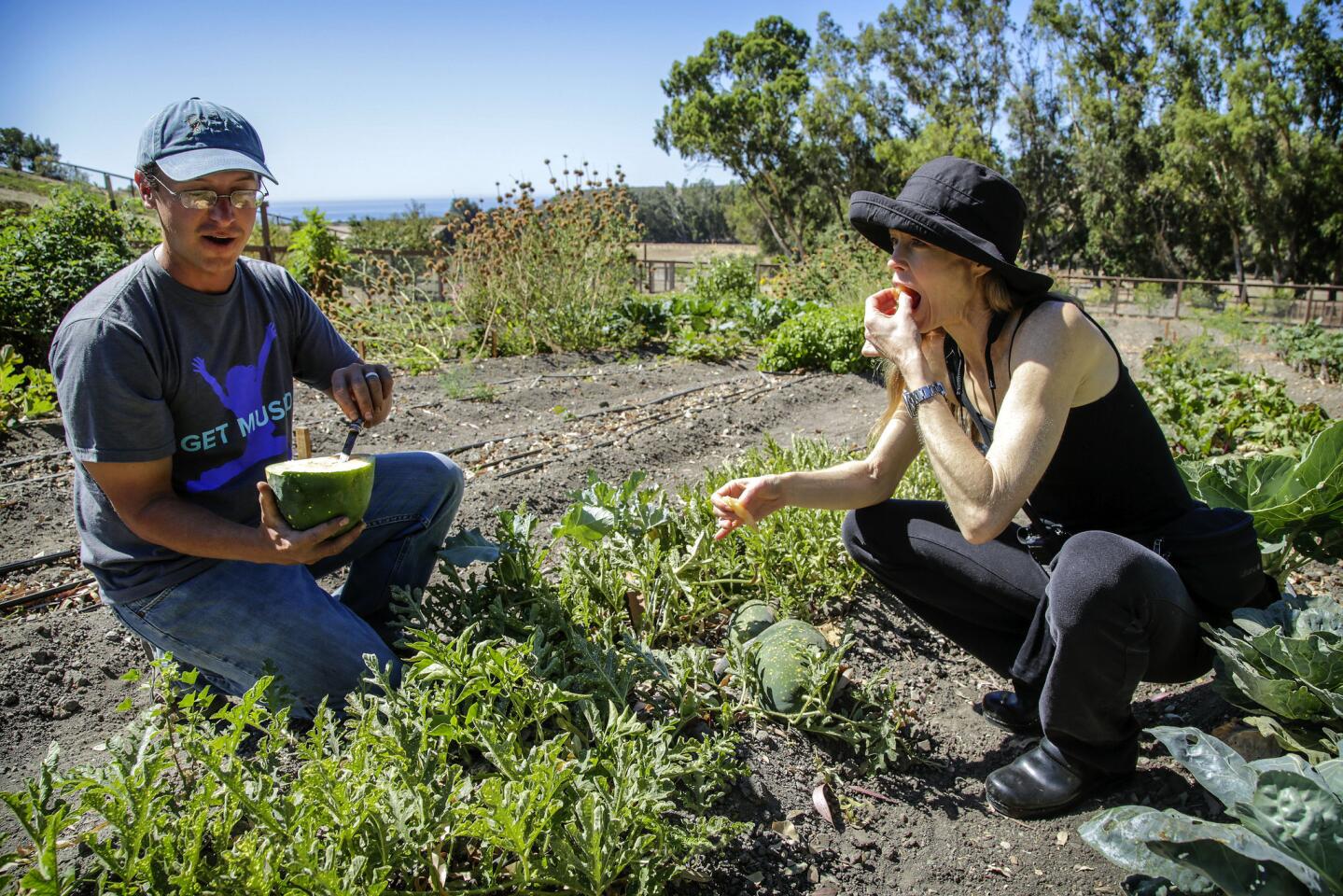
Garden consultant Paul Hudak and Suzy Amis Cameron sample a Moon and Stars watermelon in one of the mini farm’s gardens overlooking the Pacific Ocean in the Santa Barbara area. (Ricardo DeAratanha / Los Angeles Times)
At James and Suzy Amis Cameron’s mini farm at Hollister Ranch, about 100 miles north of Hollywood, the fall and winter crops are going into the ground. We tag along for a peek at the crops that will supply 90% of what the couple eats.
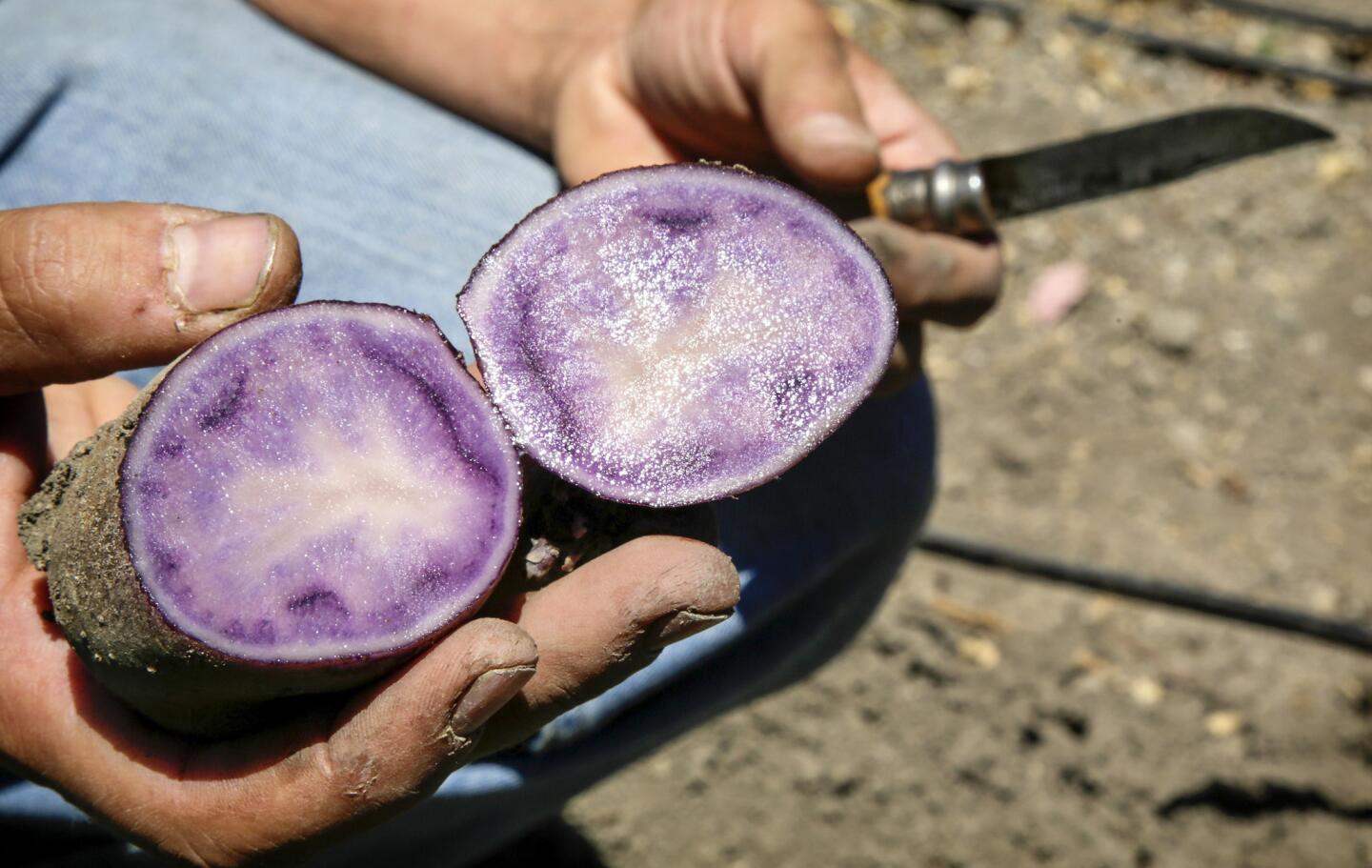
Paul Hudak cuts open an Adirondack Blue, a potato that is one of more than 150 crops grown at the ranch, constituting 90% of what the family eats, says Suzy Amis Cameron. (Ricardo DeAratanha / Los Angeles Times)
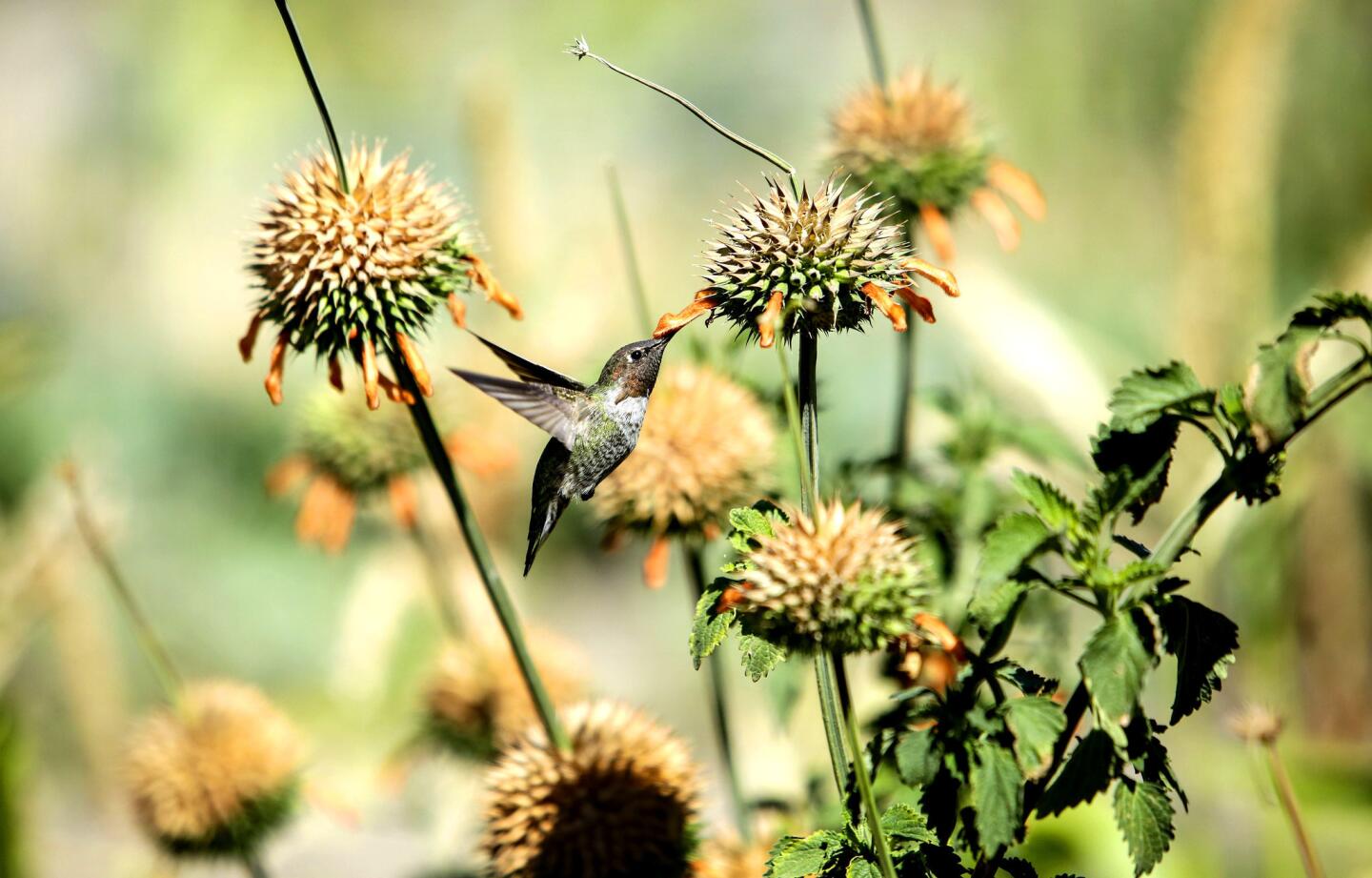
A hummingbird extracts nectar from lion’s tail (Leonotis leonurus), a South African shrub. The edible landscape is dotted with ornamental flowers to attract pollinators and beneficial bugs. (Ricardo DeAratanha / Los Angeles Times)
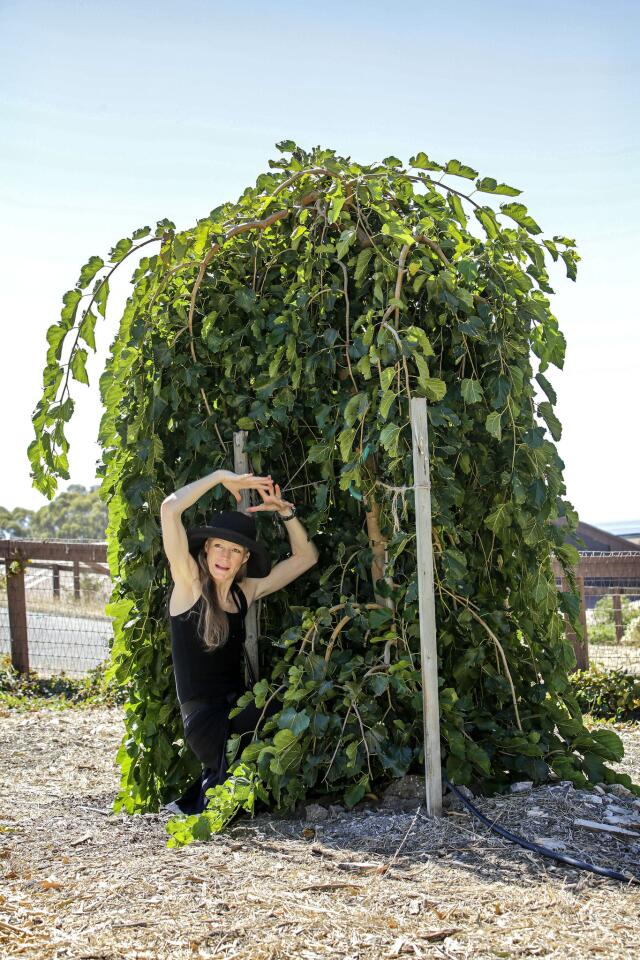
Suzy Amis Cameron in the shade of a mulberry tree at her ranch near Santa Barbara. (Ricardo DeAratanha / Los Angeles Times)
Advertisement
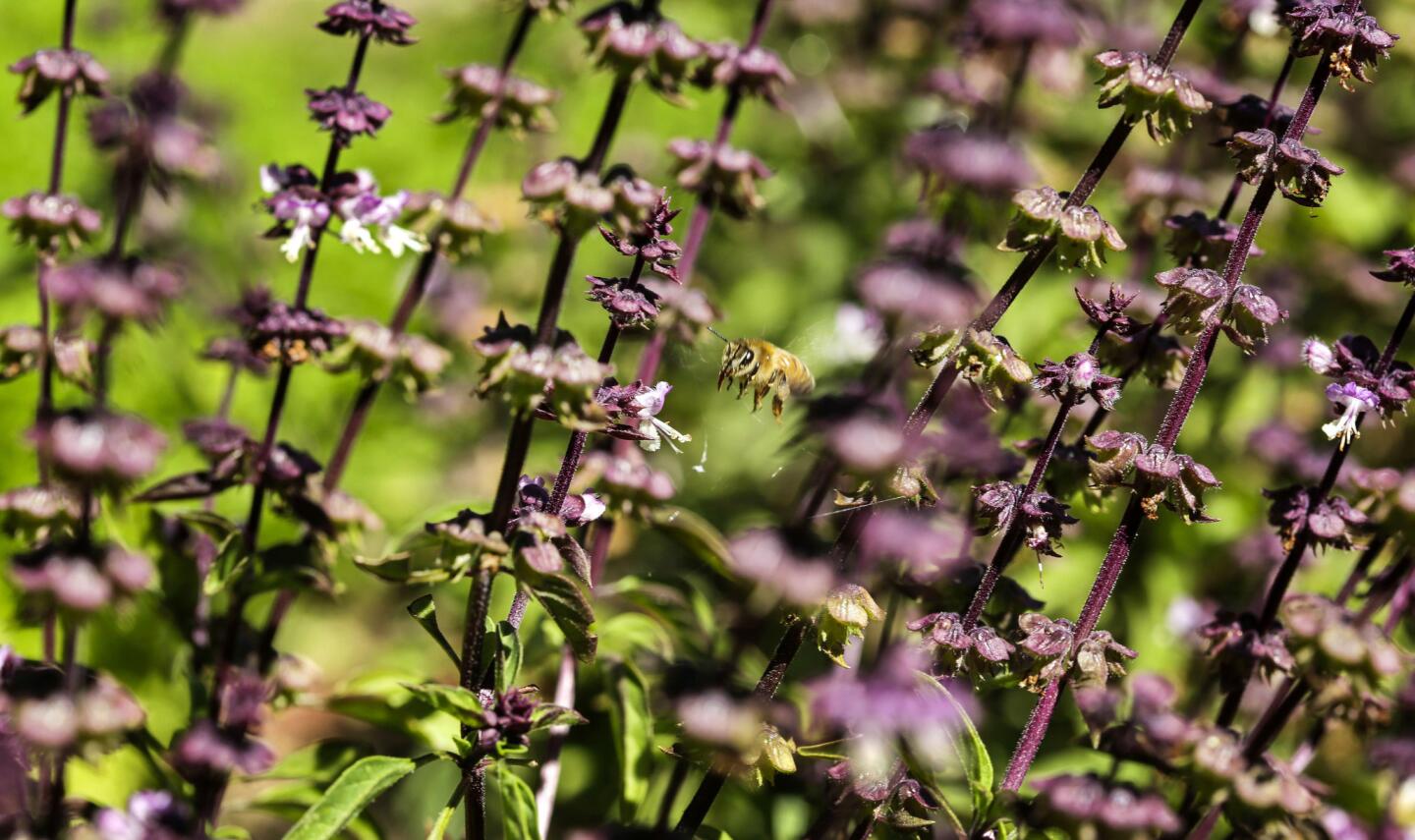
A bee hovers in a patch of cinnamon basil, which has flavorful leaves. (Ricardo DeAratanha / Los Angeles Times)
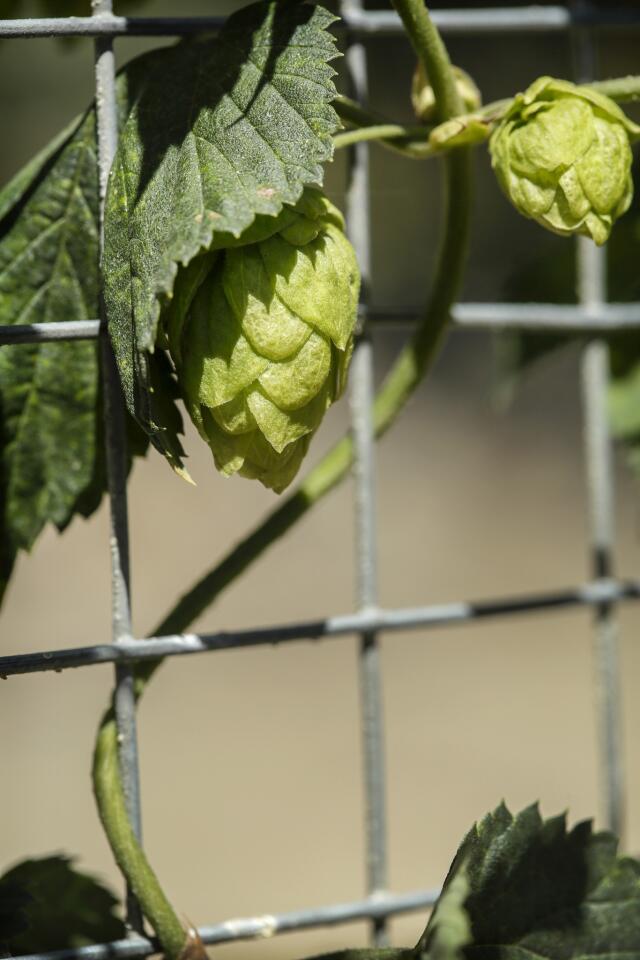
Detail of a hop vine growing on the fence surrounding the garden. Paul Hudak, who in addition to overseeing the Camerons’ mini farm also directs the Seed to Table program at the school Suzy Amis Cameron founded, said students like to make tinctures with the medicinal plant. “Paul is really special,” Suzy Cameron said. “He taps in to what fires kids up.” (Ricardo DeAratanha / Los Angeles Times)
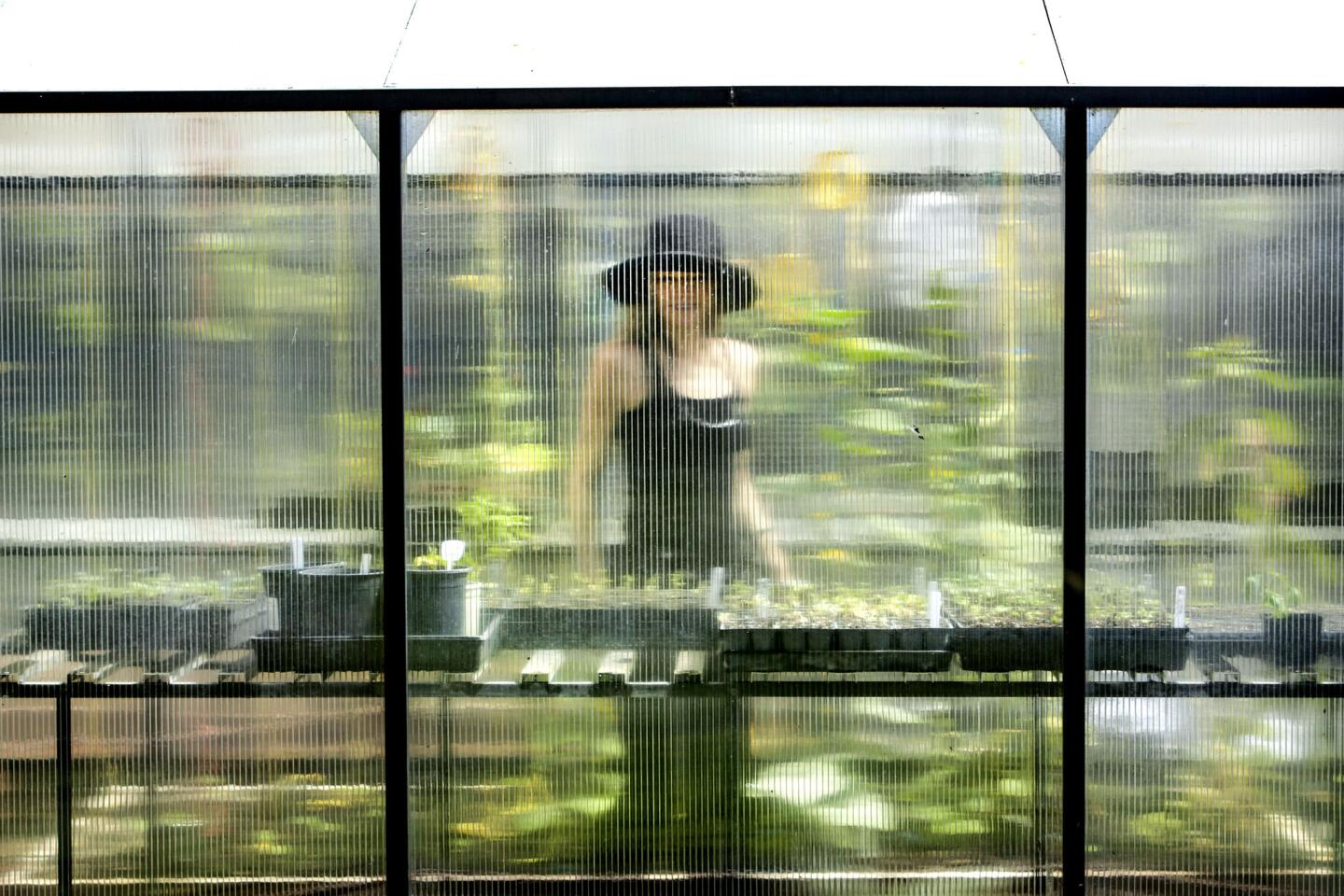
Suzy Amis Cameron inside the greenhouse, where plants are propagated. (Ricardo DeAratanha / Los Angeles Times)
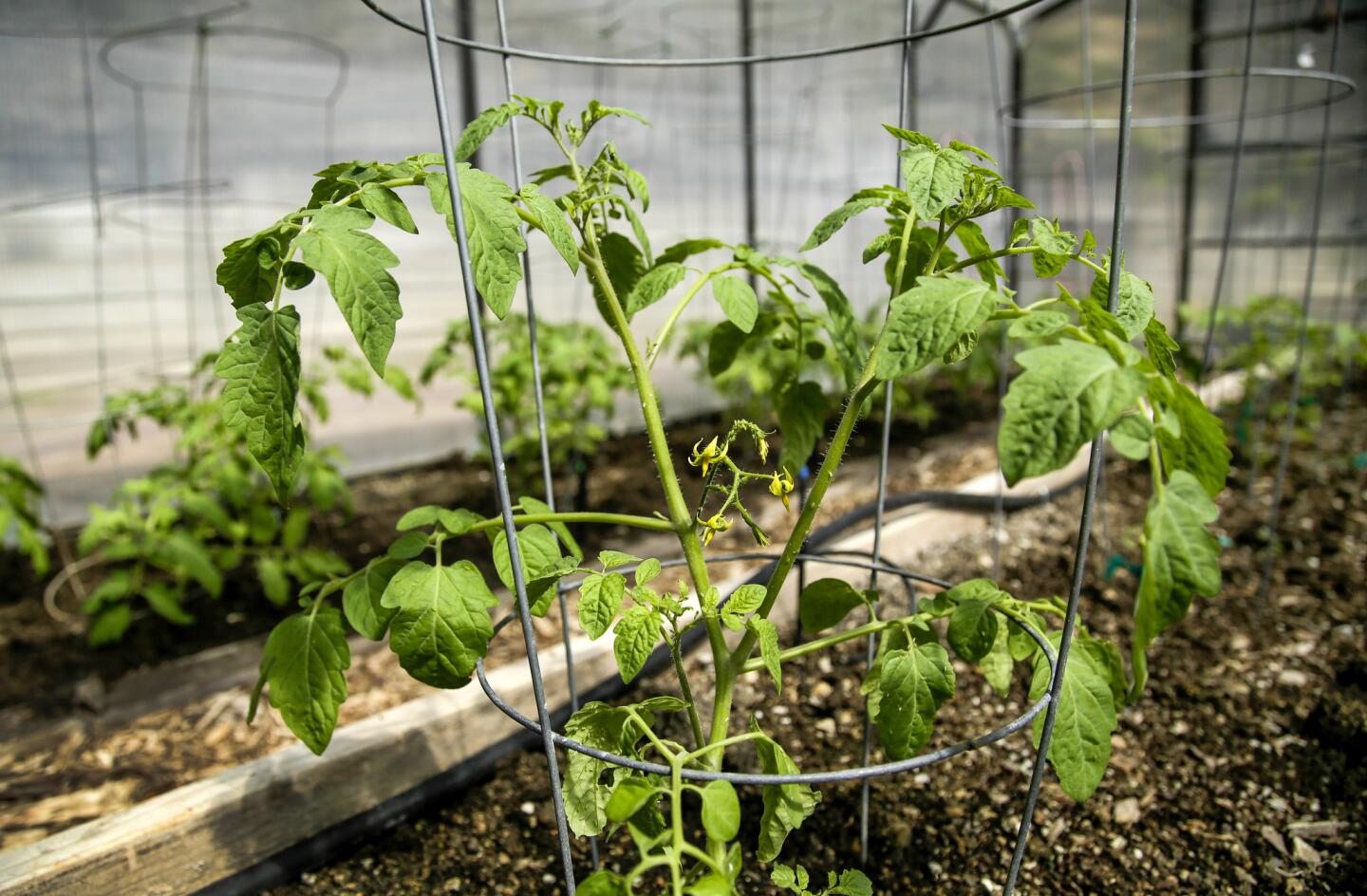
Summer is over, but off-season tomatoes are still growing strong in the greenhouse. (Ricardo DeAratanha / Los Angeles Times)
Advertisement
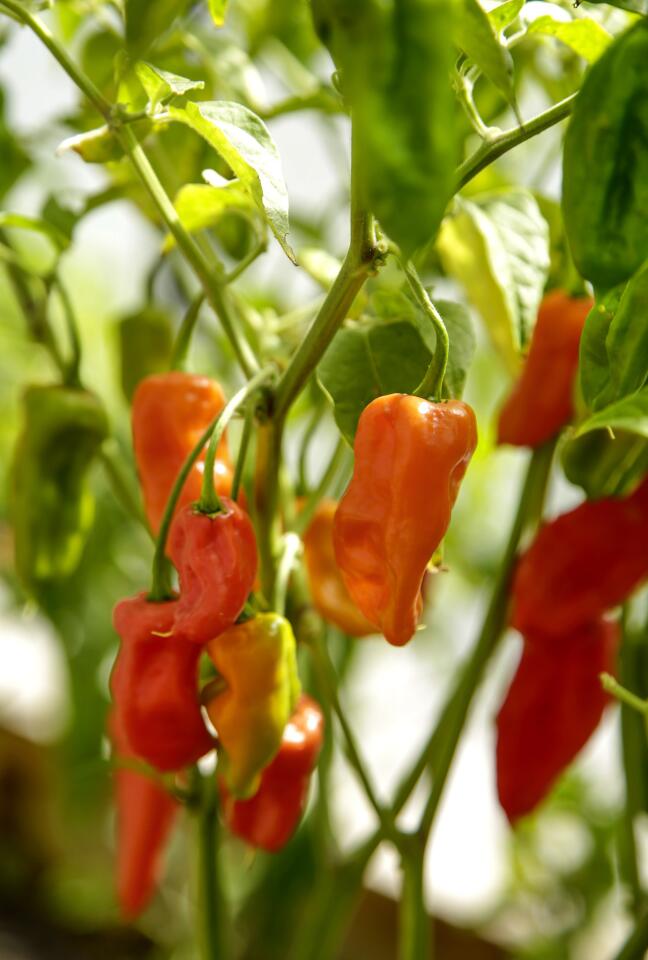
Also in the greenhouse: habaneros, among the many peppers growing inside. (Ricardo DeAratanha / Los Angeles Times)
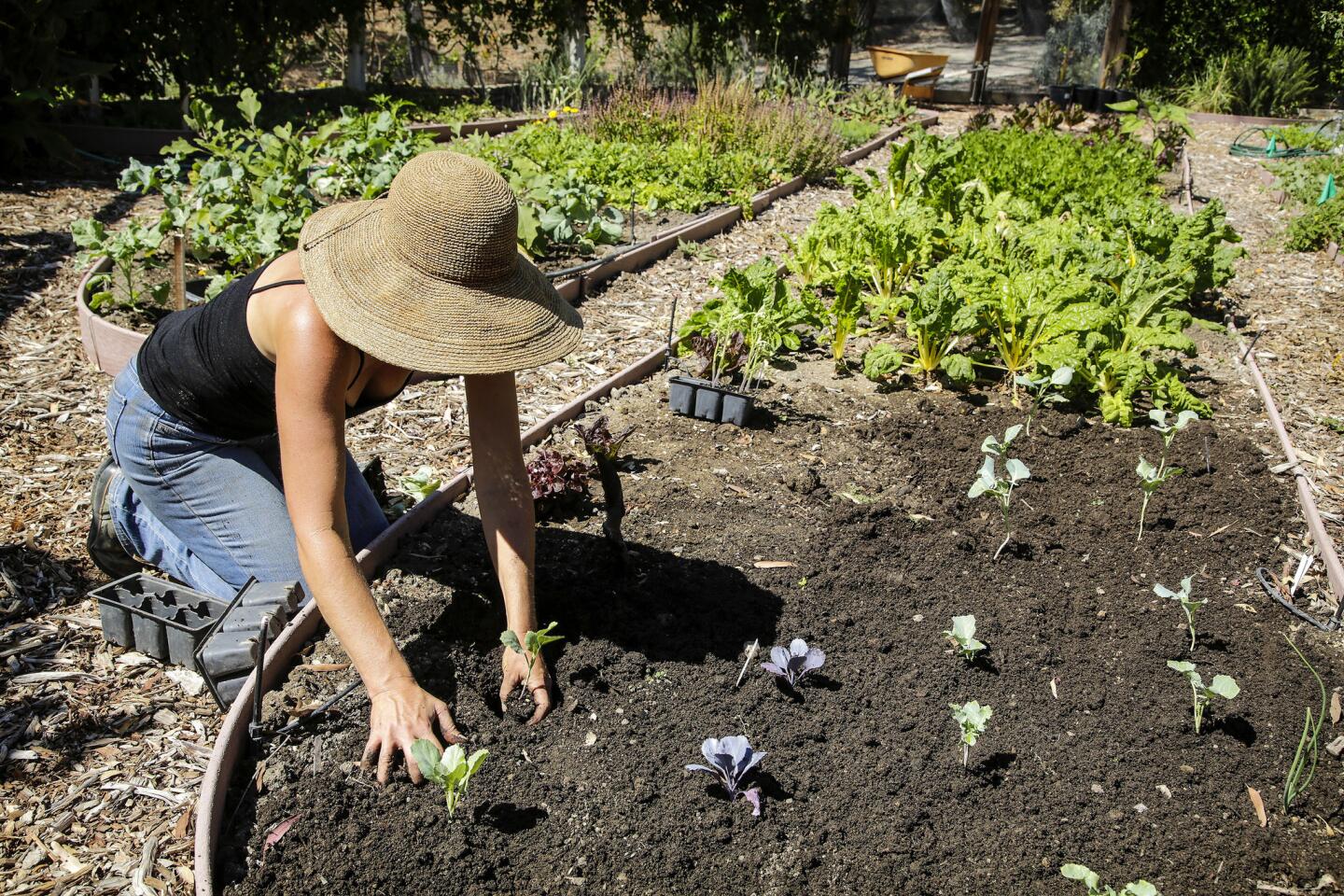
Gardener Cindy Henning plants broccoli in the ranch’s upper circle garden. Garden manager Paul Hudak said about three-quarters of the mini farm’s seeds are bought, and the rest were saved from previous season’s crops. A goal for the Cameron operation: to have its own seed bank. “We are constantly seeding,” said Hudak, who took about 12 trays of seeds out into the fields during The Times’ visit Sept. 24. “We are constantly rotating the crops.” (Ricardo DeAratanha / Los Angeles Times)
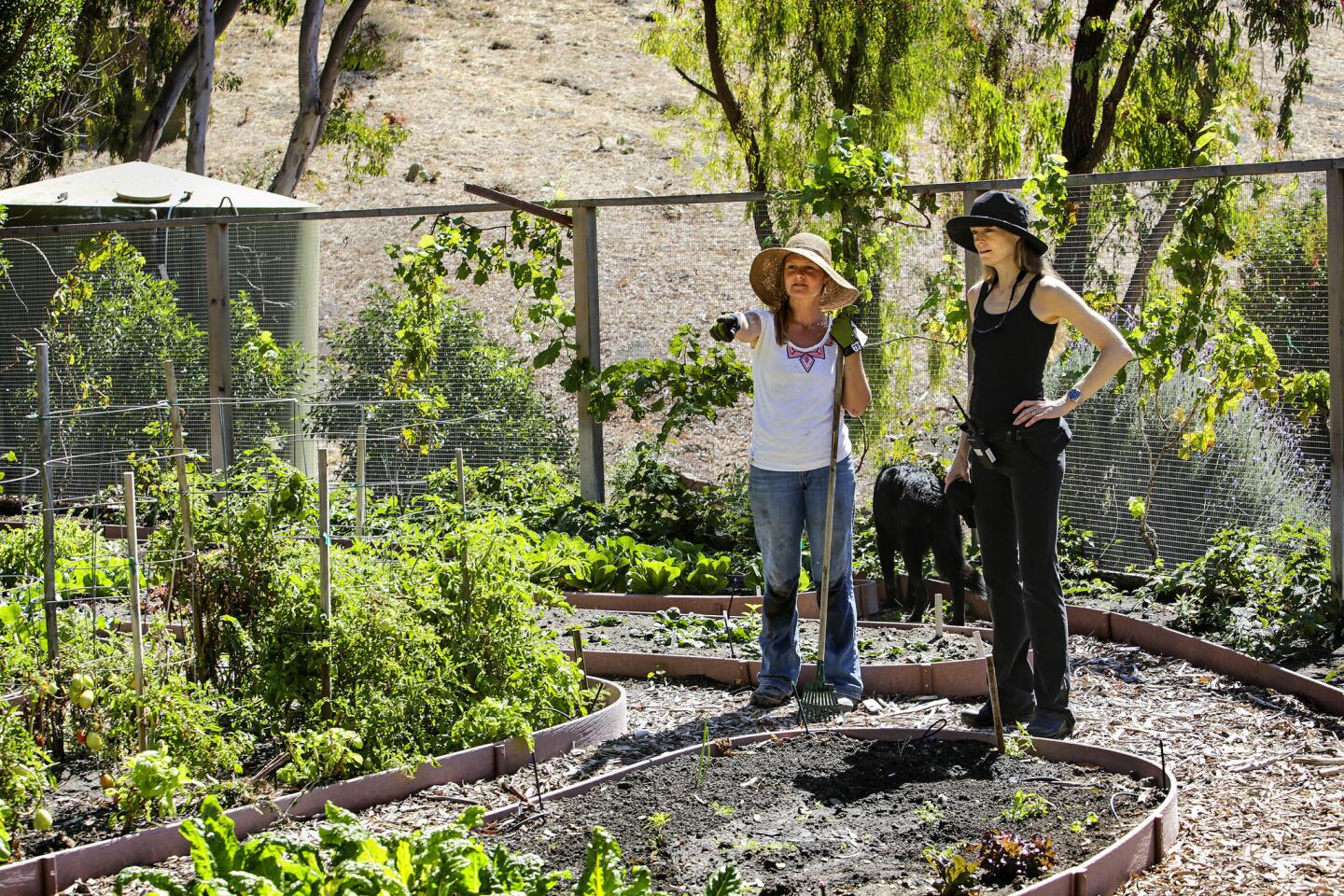
Cindy Henning, left, and Suzy Amis Cameron survey the circle garden, which had been a horse turnaround before the Camerons bought the property. (Ricardo DeAratanha / Los Angeles Times)
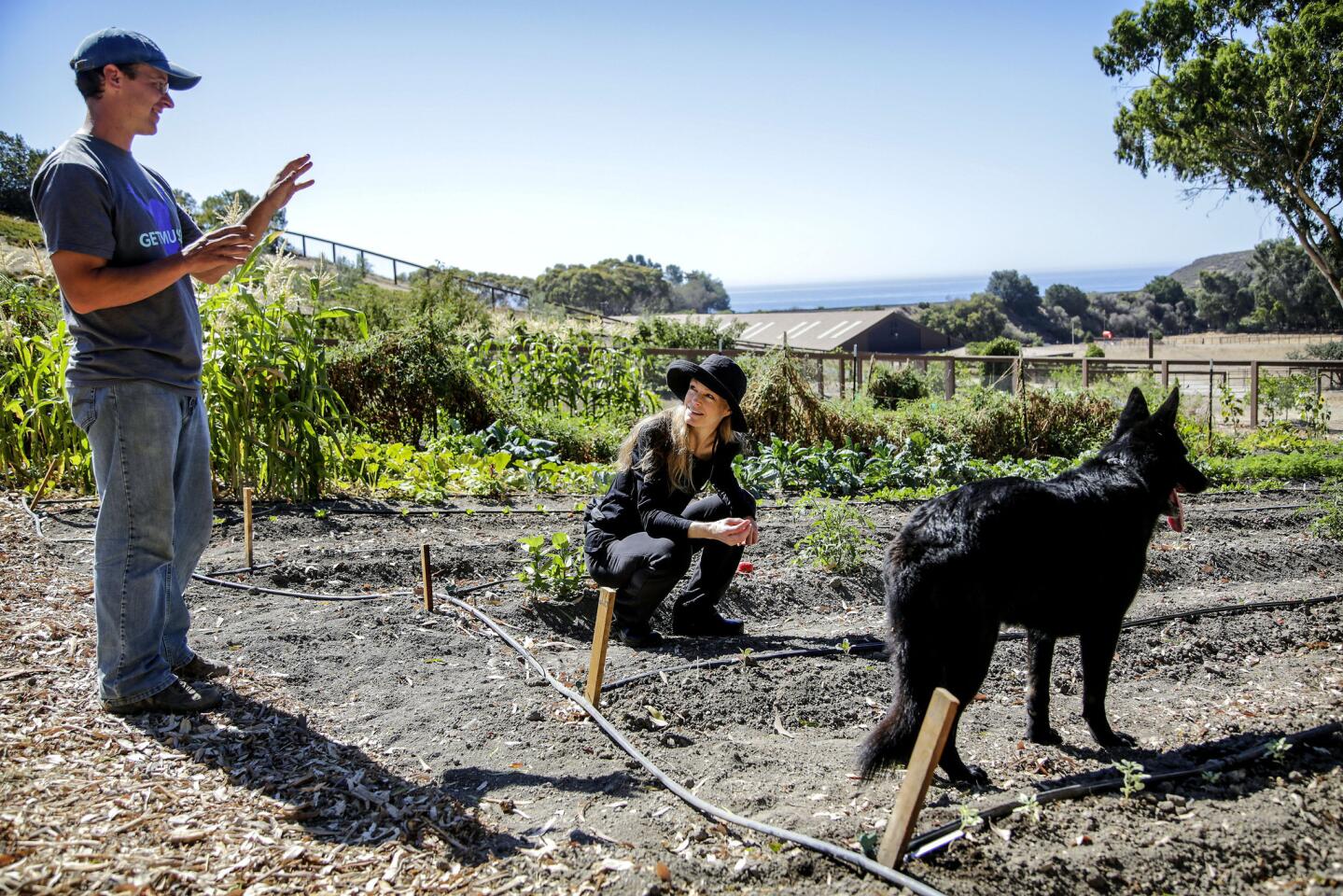
The mini farm is harvested once a week. Some crops go to the MUSE school in Calabasas, where Paul Hudak coordinates with the cooks to avoid overproduction. One recent Monday, the staff prepared lentil stew and kale salad for the students using produce from the Camerons’ farm. (Ricardo DeAratanha / Los Angeles Times)
Advertisement
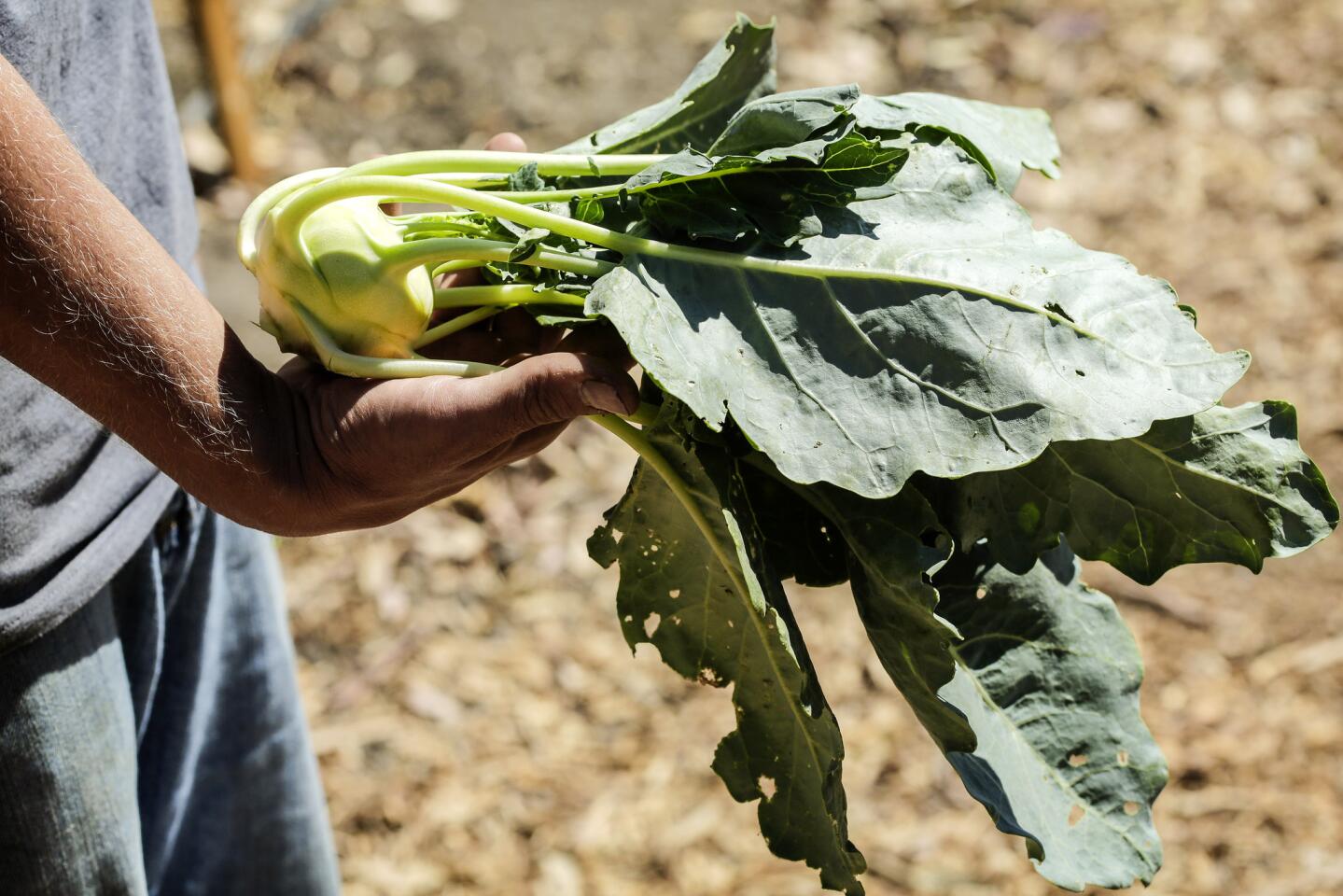
Paul Hudak holds freshly harvested kohlrabi, a relative of the cabbage, and... (Ricardo DeAratanha / Los Angeles Times)
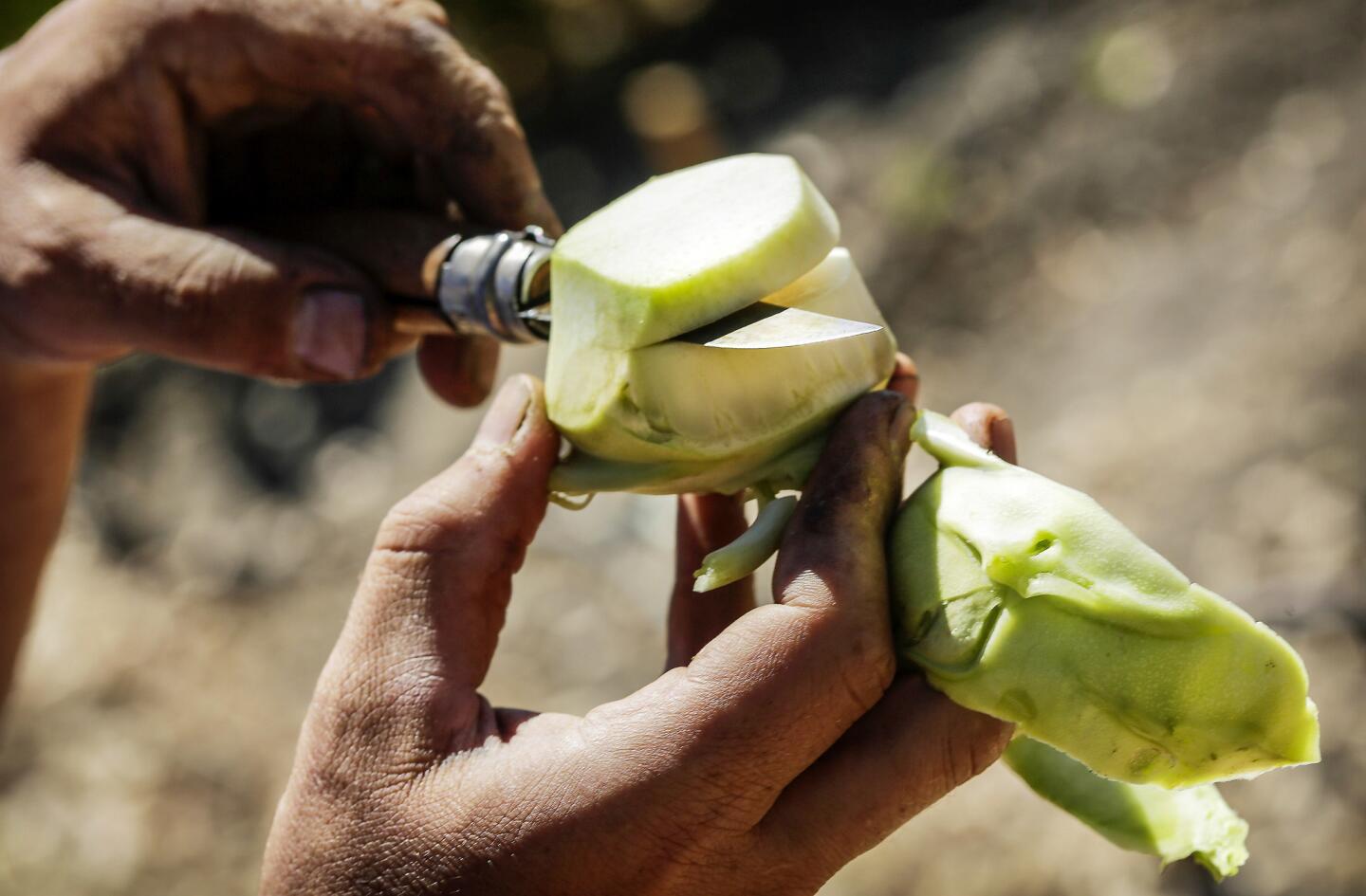
... slices the kohlrabi to sample. (Ricardo DeAratanha / Los Angeles Times)
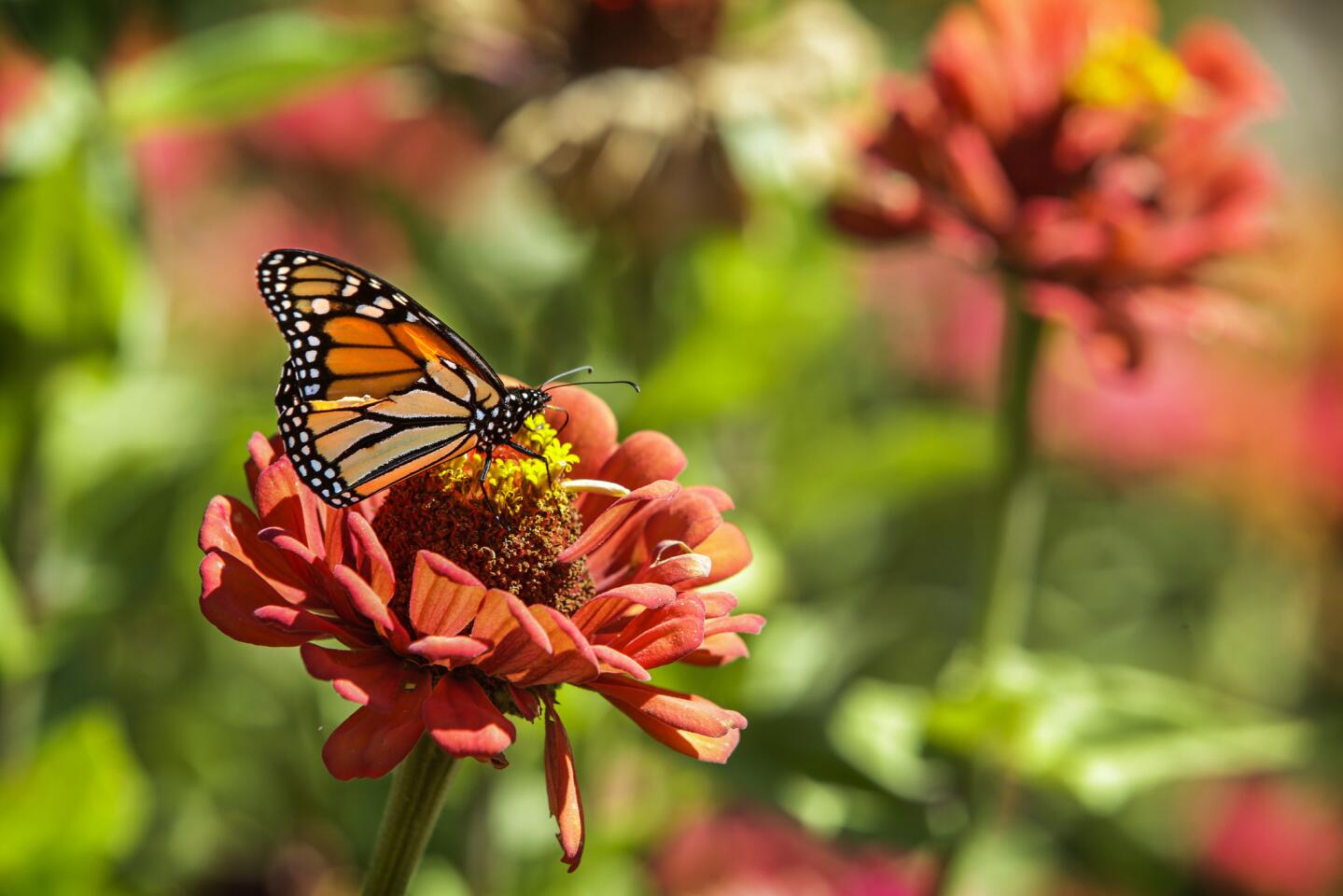
A zinnia attracts a pollinator -- a monarch butterfly. (Ricardo DeAratanha / Los Angeles Times)
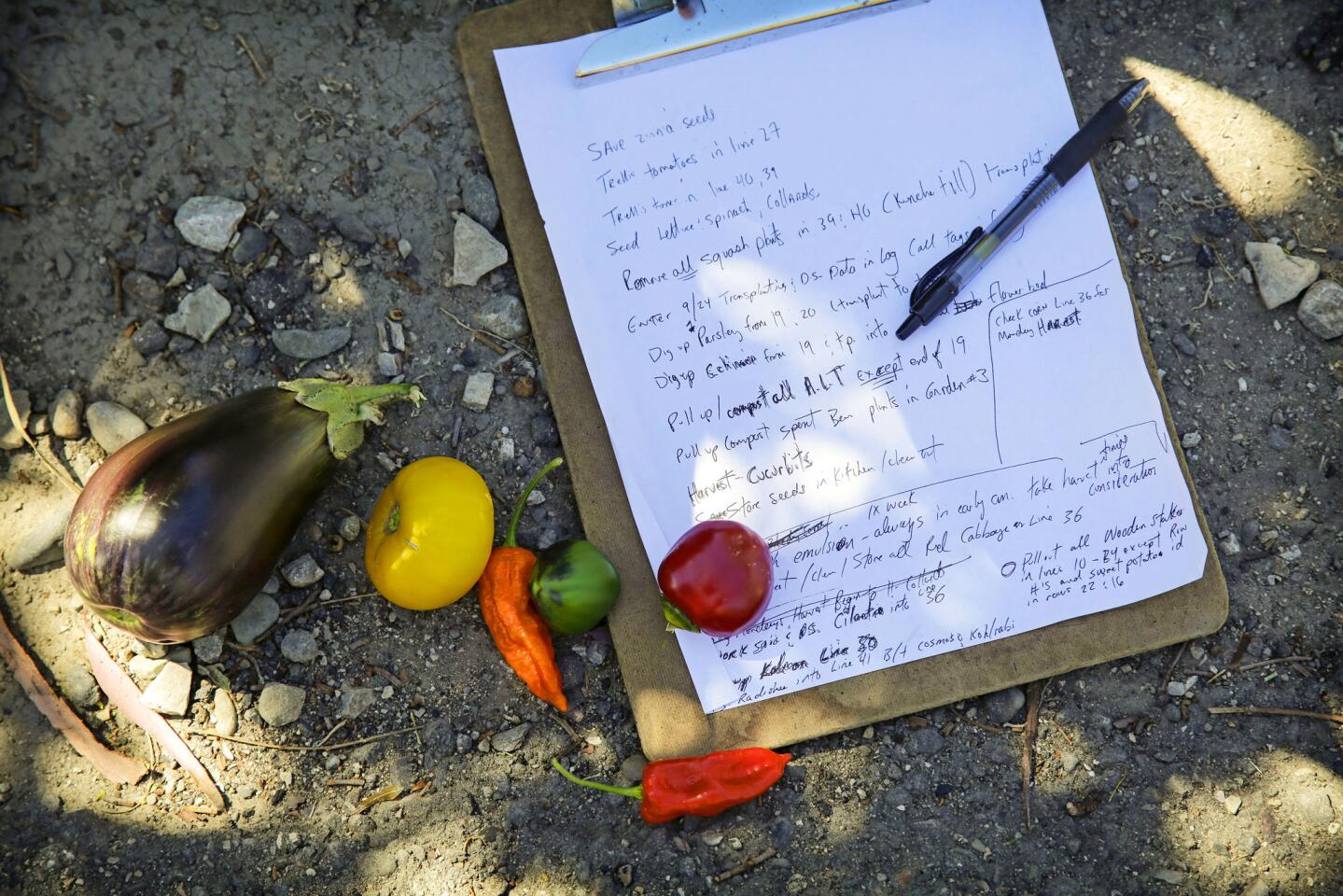
Included on Paul Hudak’s to-do list for fall: “Save zinna seeds. Trellis tomatoes. Seed lettuce, spinach, collards. Remove all squash plants.” (Ricardo DeAratanha / Los Angeles Times)
Advertisement
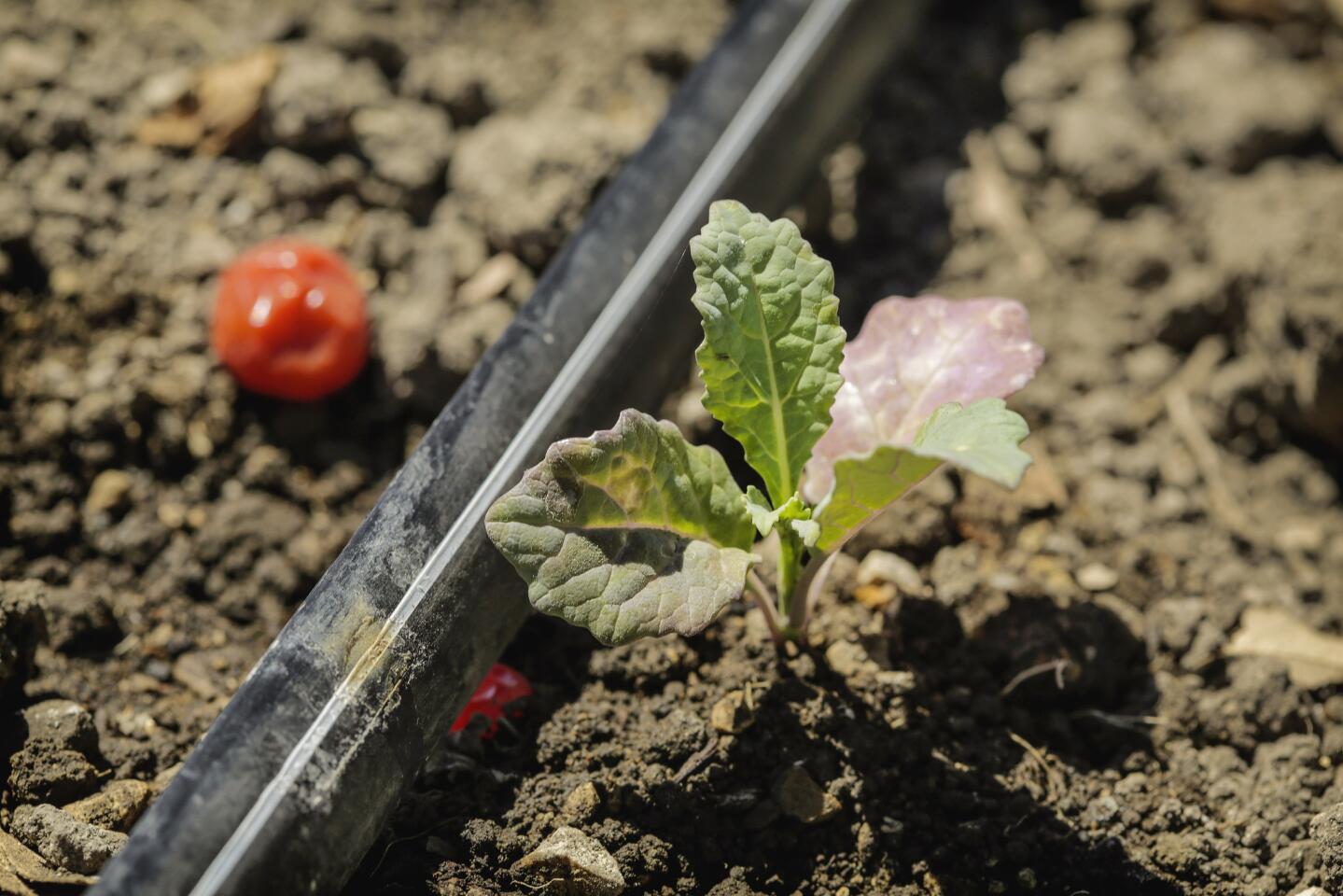
Quinoa on the day it was planted. (Ricardo DeAratanha / Los Angeles Times)
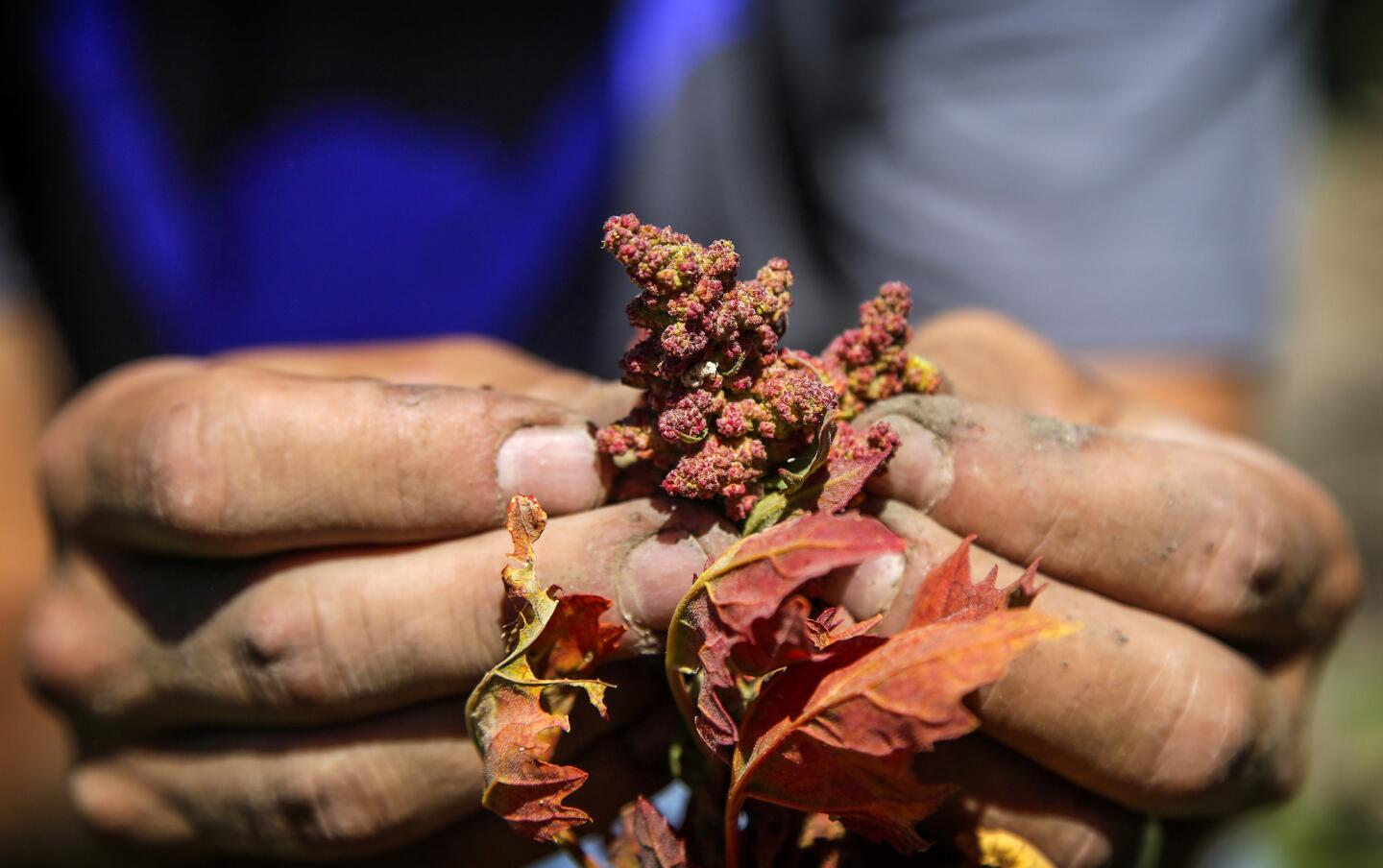
Hudak holds quinoa from last season. (Ricardo DeAratanha / Los Angeles Times)
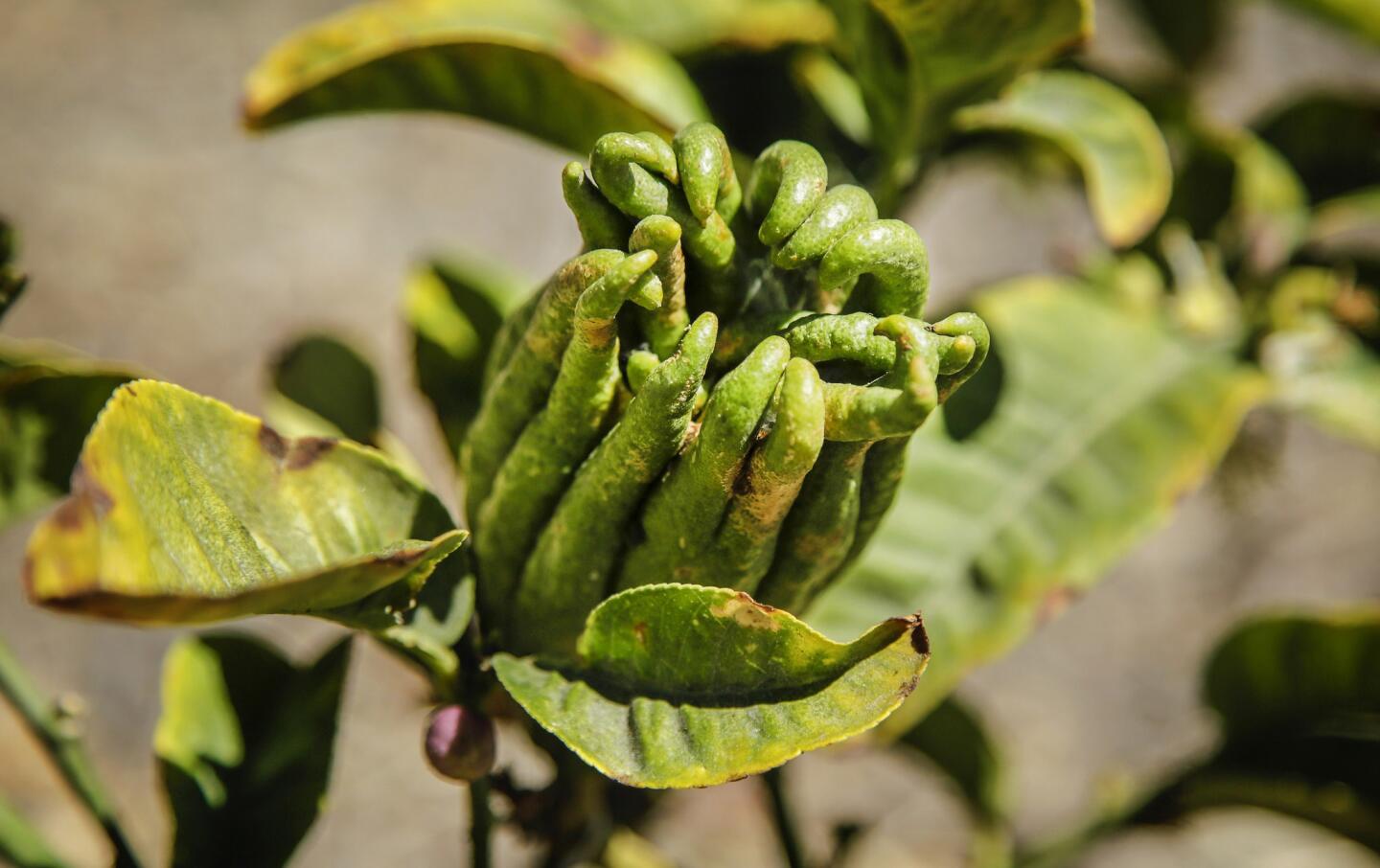
The plants on the farm include the exotic, such as an etrog citron. (Ricardo DeAratanha / Los Angeles Times)
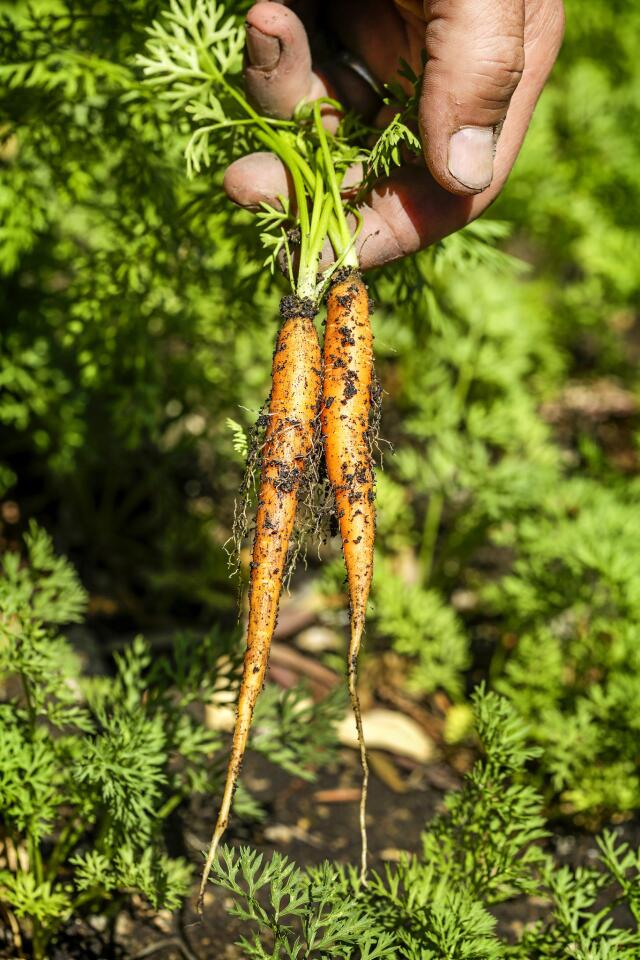
Carrots are pulled from the soil. Paul Hudak plants according to the biodynamic calendar as much as possible, meaning that vegetables, fruits and flowers go into the ground based on the phases of the moon. (Ricardo DeAratanha / Los Angeles Times)
Advertisement
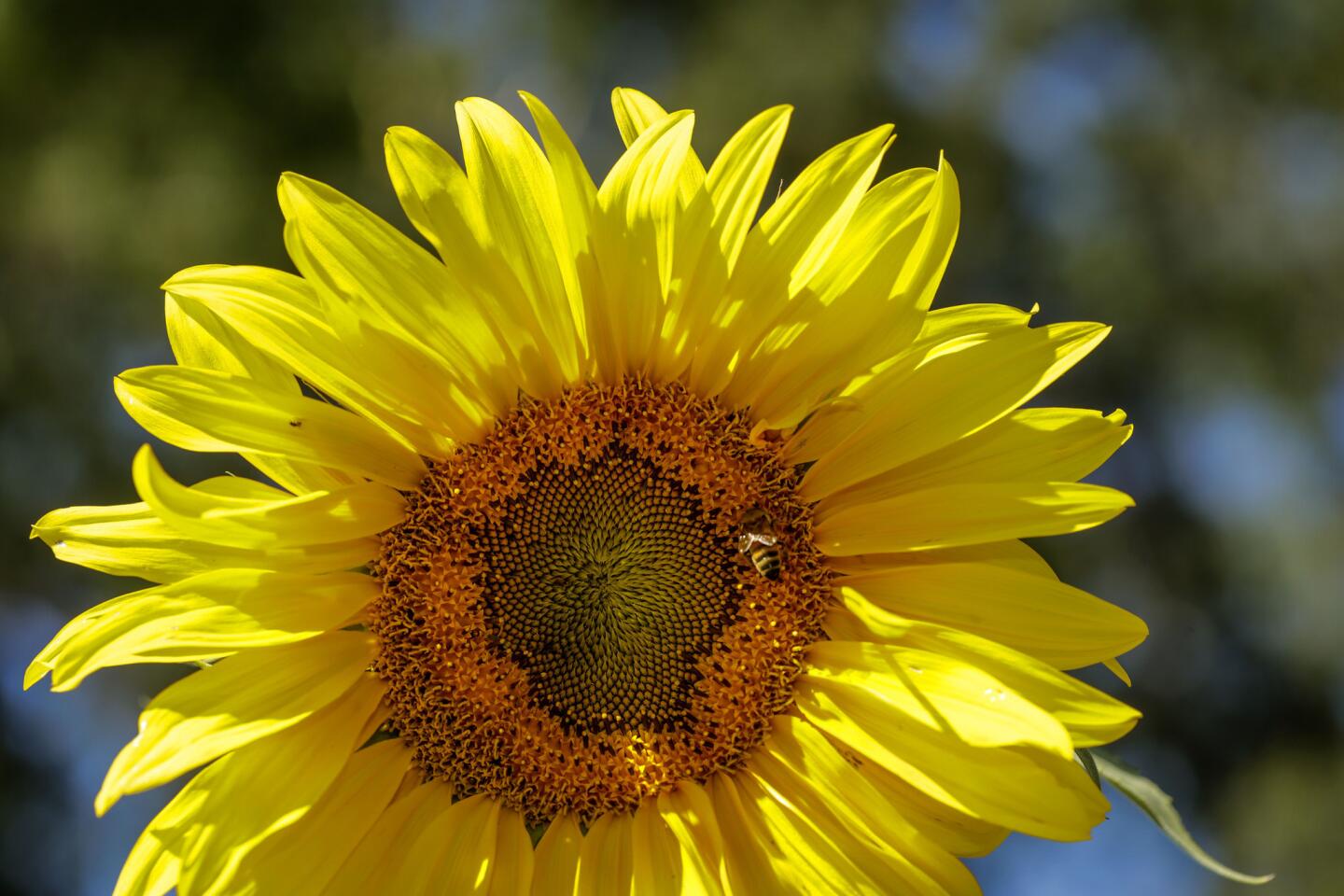
Sunflowers, along with cosmos and zinnias, are key to attracting bees and butterflies. (Ricardo DeAratanha / Los Angeles Times)
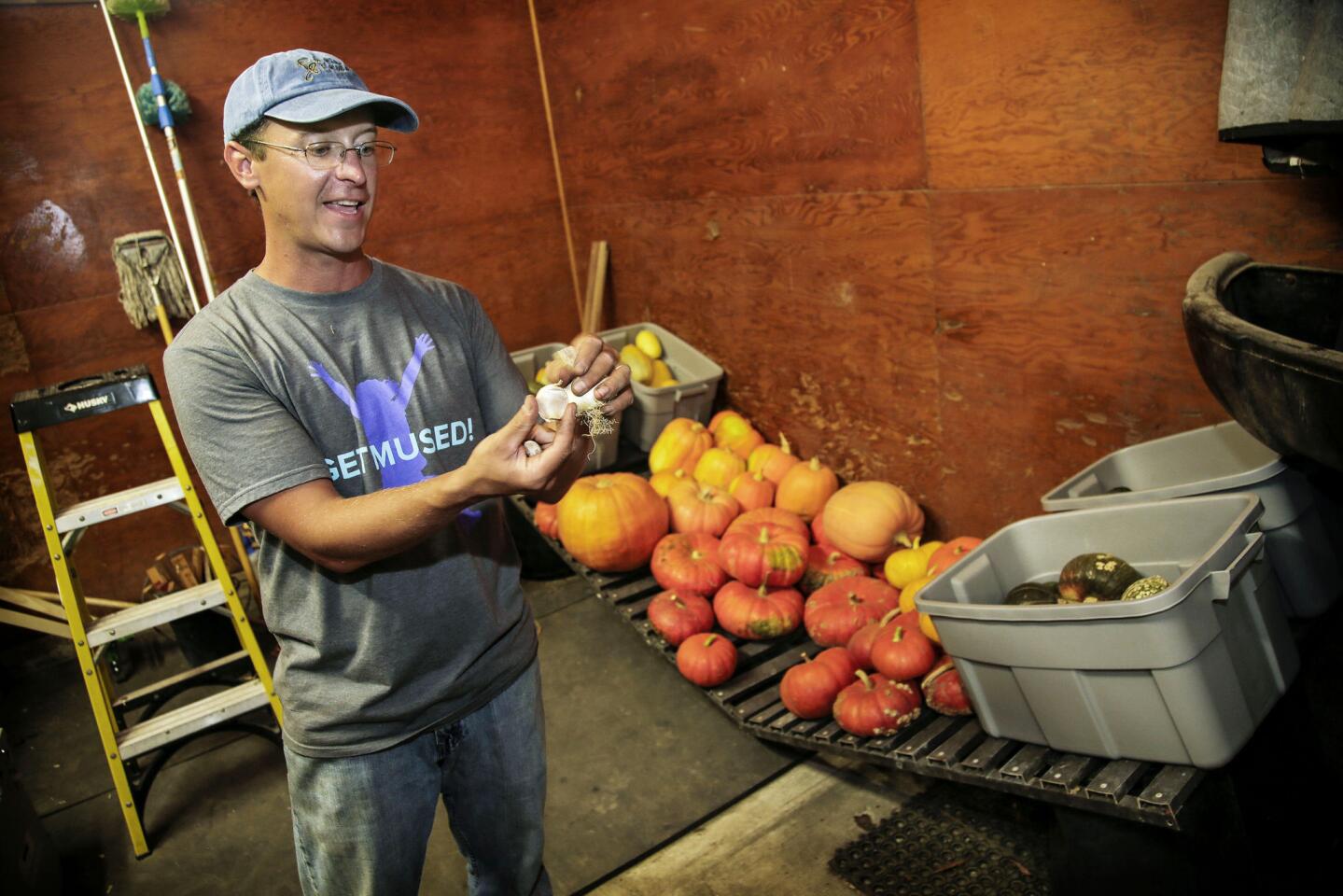
In a storage room Paul Hudak pulls out garlic, which he said he will plant 500 times over at the Cameron ranch. Fall is a great time to plant it. Hudak’s advice: Simply get the biggest clove you can find and plant it root side down. Behind Hudak: Part of the property’s weekly harvest. (Ricardo DeAratanha / Los Angeles Times)
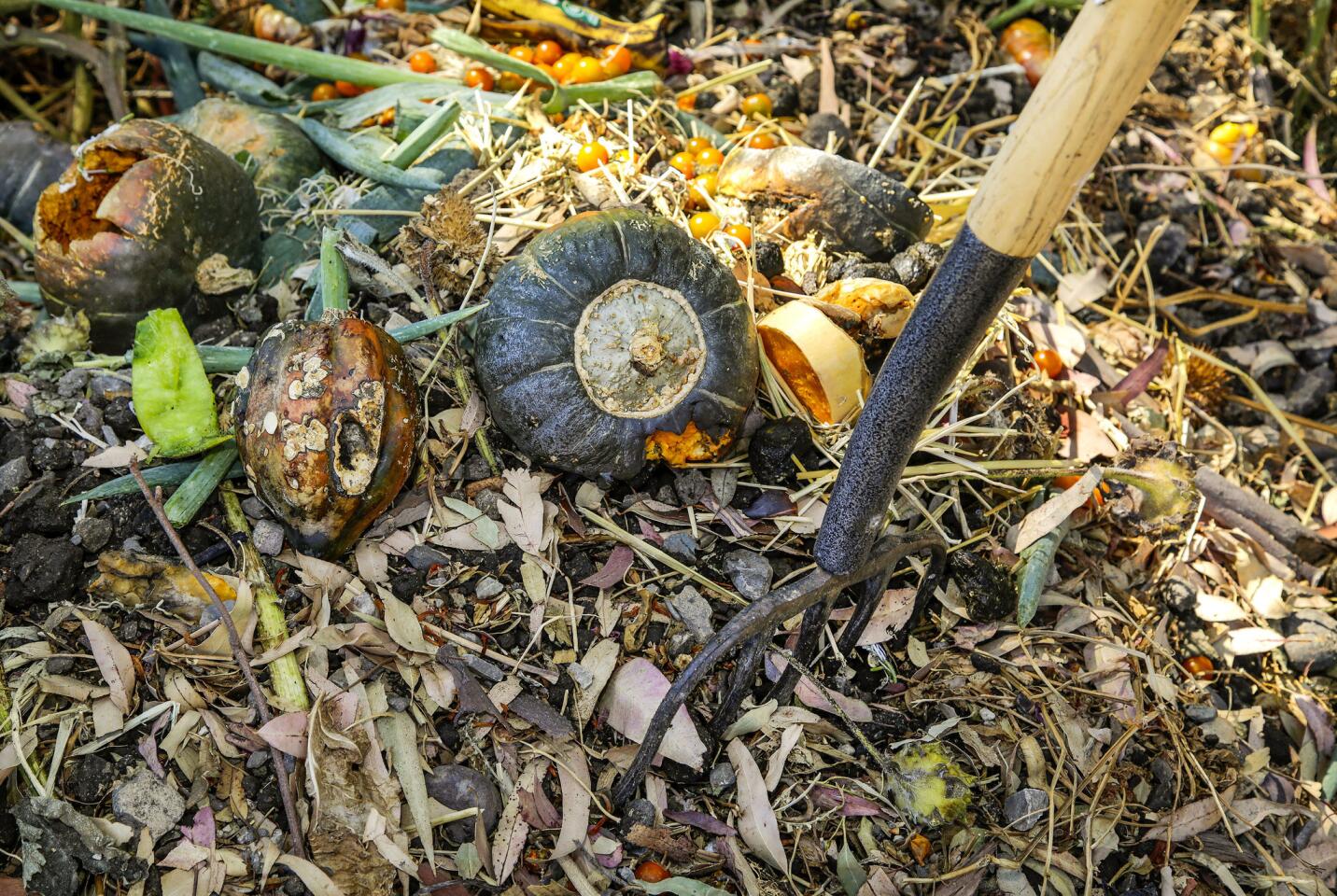
The compost pile: The Camerons use no animal manure. Instead, the compost is simply layered with material that’s high in nitrogen (vegetable scraps and other plant matter) and high in carbon (dried leaves and straw). The moisture level is monitored and the pile gets turned with a tractor every seven to 14 days. “I think of it like yogurt,” Hudak said. “The microorganisms activate the pile.” (Ricardo DeAratanha / Los Angeles Times)
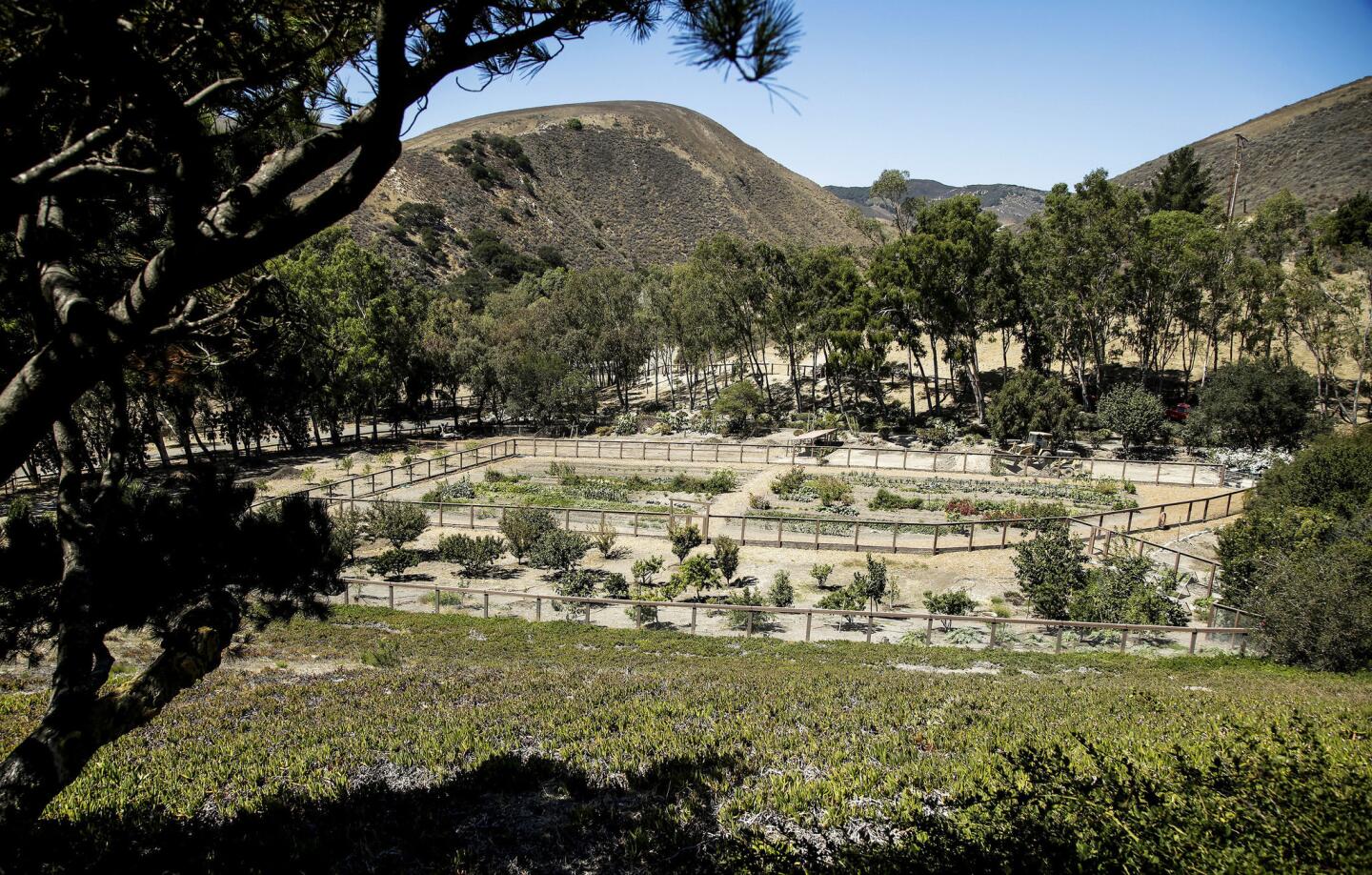
A view of the mini farm, as seen from the Camerons’ house, surrounded by citrus trees. (Ricardo DeAratanha / Los Angeles Times)
Advertisement
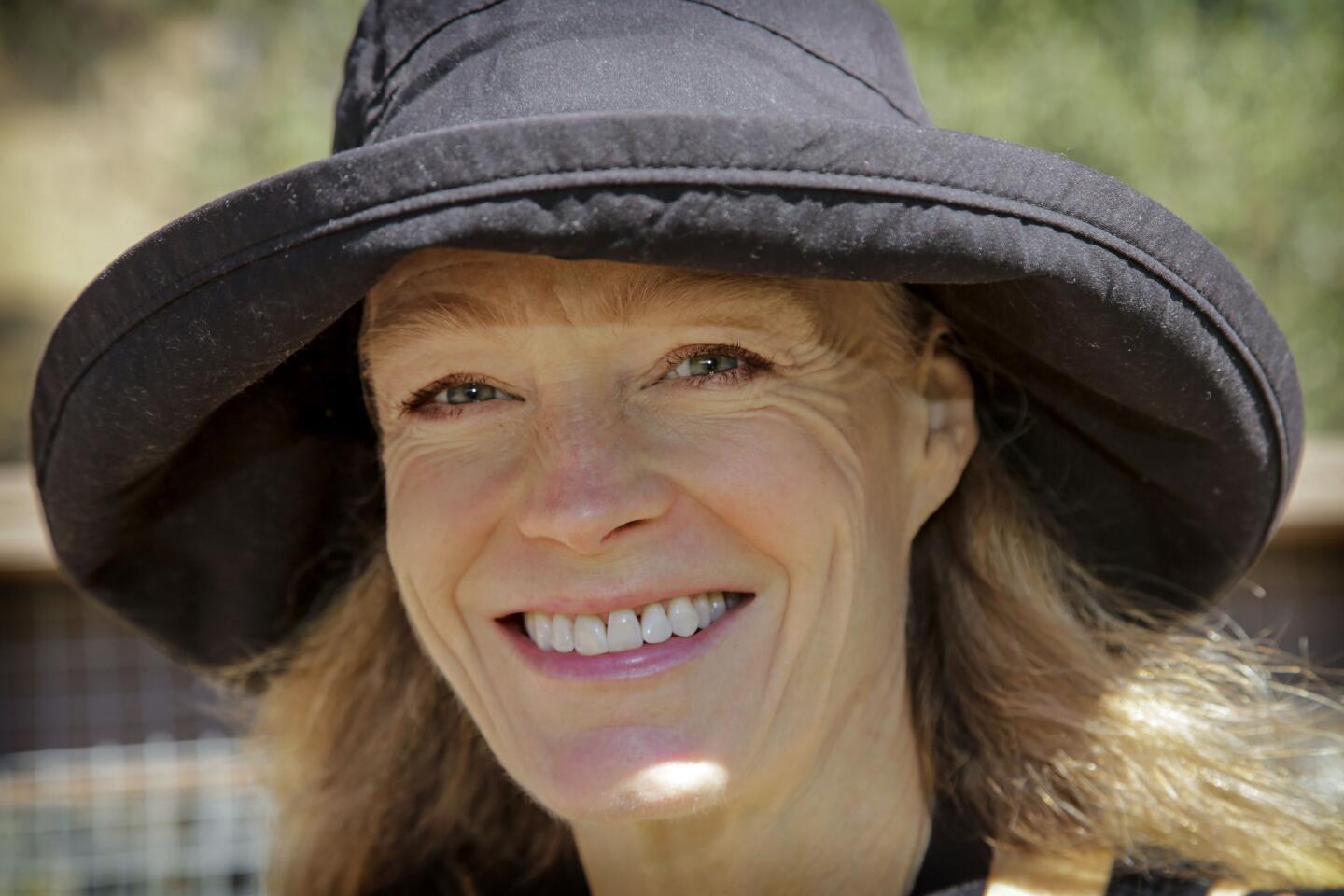
Suzy Amis Cameron says she and her husband, filmmaker James Cameron, switched to a plant-based diet more than a year ago after viewing “Forks Over Knives,” Lee Fulkerson’s 2011 documentary. (Ricardo DeAratanha / Los Angeles Times)
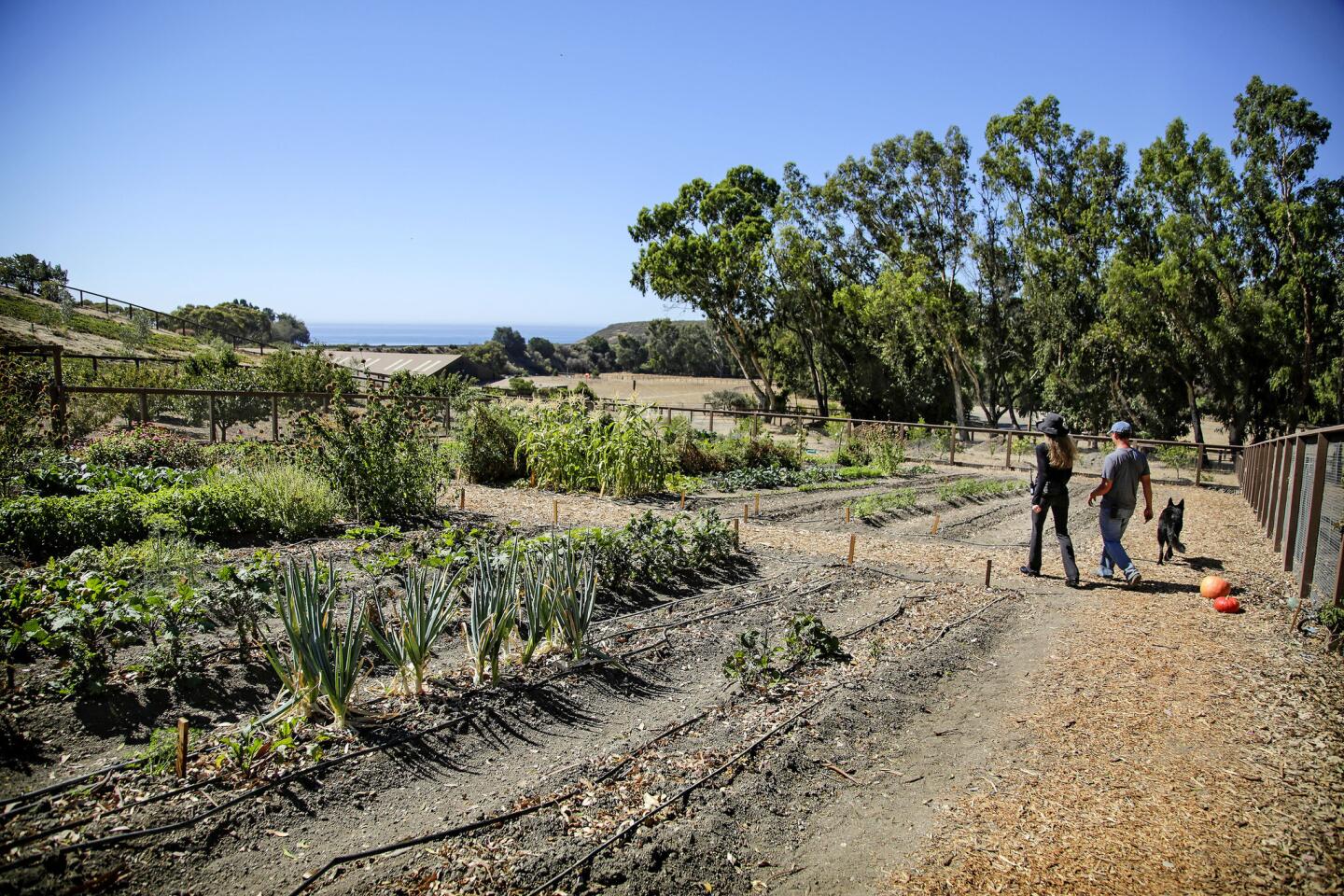
Suzy Amis Cameron and Paul Hudak survey the new plantings for fall: quinoa, collards, lettuce, cilantro and more, on fields overlooking the ocean. Read the full article on our visit to the Cameron ranch and get Hudak’s suggestions on which crops are best planted as seed, and which are best bought as nursery plants. (Ricardo DeAratanha / Los Angeles Times)


